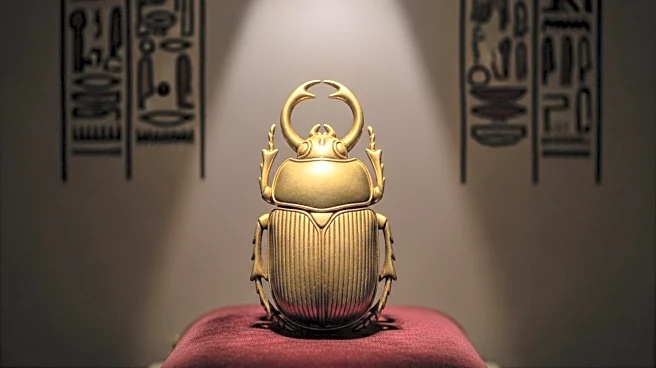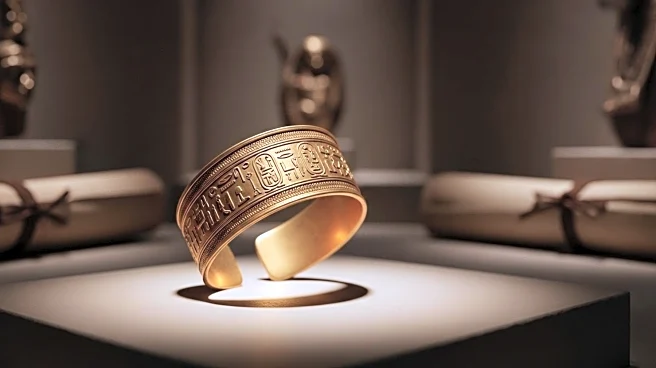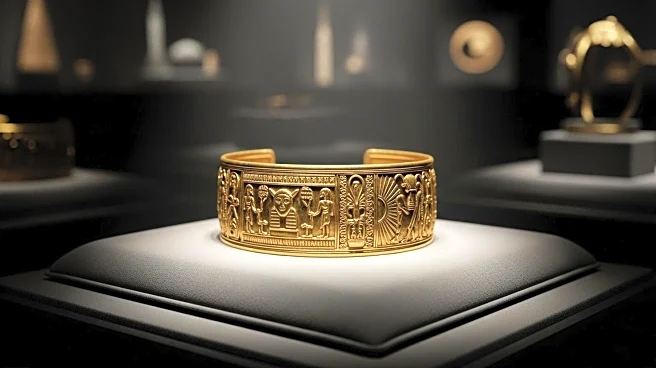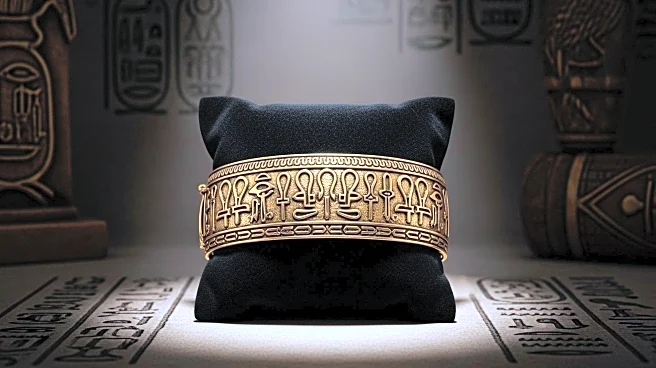What's Happening?
A 3,000-year-old gold bracelet, once belonging to King Amenemope, was stolen from an Egyptian museum and subsequently melted down, according to Egypt's Interior Ministry. The bracelet, adorned with lapis lazuli beads, disappeared from a conservation laboratory on September 9. The theft was traced to a museum restoration specialist who sold the artifact to a silver trader, who then passed it to a workshop owner in Cairo's jewelry district. The gold was eventually recast by a smelter. The suspects have been arrested, and the proceeds from the sale, valued at approximately 194,000 Egyptian pounds, were seized.
Why It's Important?
The theft and destruction of such a significant artifact highlight the challenges faced by museums in protecting cultural heritage. This incident underscores the need for stringent security measures and oversight in handling valuable historical items. The loss of the bracelet is not only a cultural tragedy but also a blow to Egypt's tourism sector, which relies heavily on its rich historical artifacts to attract visitors. The timing of the theft, just weeks before the opening of the Grand Egyptian Museum, adds to the urgency of addressing security concerns.
What's Next?
The Egyptian authorities are likely to review and enhance security protocols at museums and other cultural sites to prevent similar incidents. The upcoming opening of the Grand Egyptian Museum may prompt additional measures to safeguard Egypt's ancient heritage. The international community may also see increased collaboration in tracking and recovering stolen artifacts.











